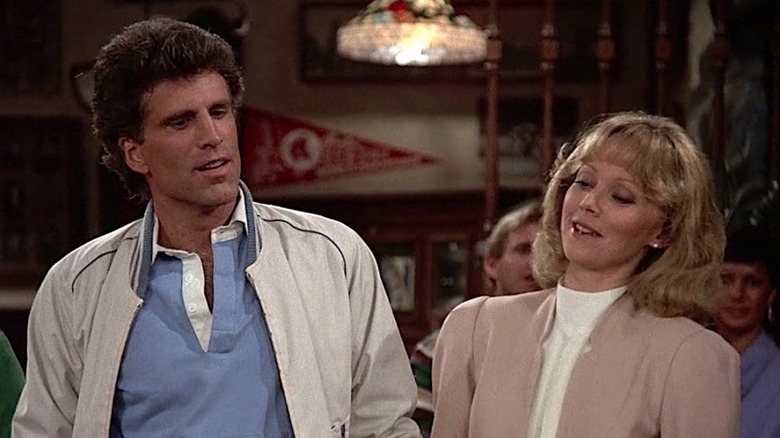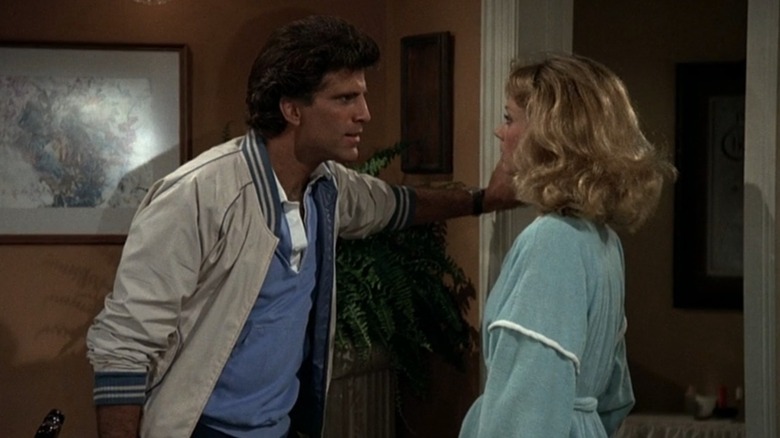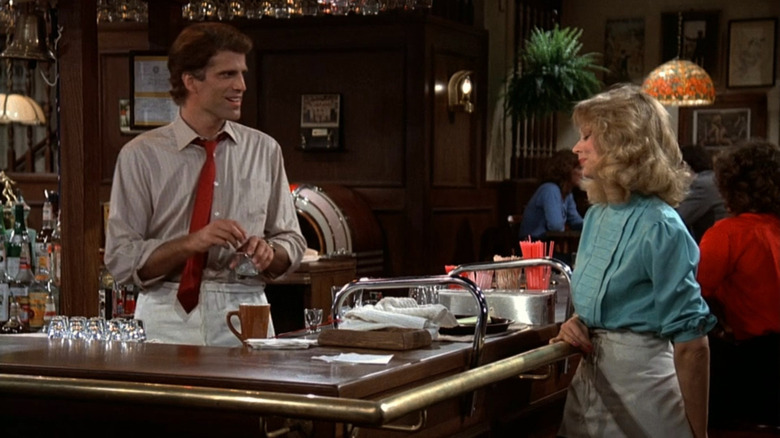Cheers Based Sam And Diane On One Of Old Hollywood's Most Famous Couples
One of the most quoted pieces of Hollywood wisdom holds that 90 percent of directing is casting. You bring the right actors together, and you're off to the races. This is, of course, laughably simplistic. You could argue that 90 percent of directing is writing because there's no movie or show to make if there's nothing on the page. And many directors will tell you that their films don't truly come together until they're hunkered down with their editor in post-production.
The truth, obviously, is that film and television production is a collaborative process that requires numerous people with expertise in different disciplines to do what they do at the highest level possible. And when it comes to casting, there is absolutely an art to finding, after untold hours of reels and cold reads, the ideal actor for each role — especially if you're trying to launch a successful television series. Because no matter how good the scripts and the directors are, you cannot force chemistry.
Just ask the creative team behind "Cheers." Series creators James Burrows, Glen Charles, and Les Charles knew they had a highly relatable premise and an amazing collection of writers, but some of the most excruciating hours I've ever experienced in a theater were spent watching poorly acted productions of unassailable classics like "Hamlet," "The Seagull" and "Noises Off." Is it unrealistic to think you'll nail every part in casting? Certainly. But it is possible.
At a network level, "Cheers" pulled this off across the board. And yet as vital as the likes of Rhea Perlman, George Wendt, and John Ratzenberger were to the success of the series, the initial hook was the will-they-or-won't-they flirtation between Ted Danson's Sam Malone and Shelley Long's Diane Chambers. There was genuine heat there. And it is not hyperbole to compare them to arguably the greatest on-screen romantic comedy duo of all time.
Tracy and Hepburn 2.0
In an interview timed to the 25th anniversary of the "Cheers" series finale, The Hollywood Reporter brought the creators and key writers together to share behind-the-scenes gossip and, most importantly, their wisdom on why the show connected so palpably for so many seasons with American television viewers. Again, it was a team effort, but you probably don't get too far out of the starting gate if the seemingly mismatched lovers at the core of the narrative fail to click.
This wasn't a problem for Danson and Long. They grasped early on that, as David Isaacs noted in the THR piece, "Diane thinks above the waist and Sam below." Glen Charles added, "Like most relationships, they had periods of attraction and repulsion, jousting with sexual undertone."
Or, as writer Bill Steinkellner put it, "It was Tracy and Hepburn 2.0."
If those names mean nothing to you, I'm envious. You get to watch Golden Age rom-com classics like "Woman of the Year," "Adam's Rib" and "Pat and Mike" for the first time. And when you do, I think you'll agree that Danson and Long, in their five seasons together, earned the comparison to Spencer Tracy and Katharine Hepburn.
Les Charles expanded on Steinkellner's comment by noting:
"There's a similarity there. Tracy was down-to-earth, unpretentious, a little rough around the edges, whereas Hepburn always seemed to have a little elevation, an attitude in which she kind of looks down on Tracy."
An on-again, off-again romance that brought indispensable talent
The significant difference with Danson and Long is that, by the end of the first season, their flirting had reached a full-on boil. The question had gone from "will-they-or-won't-they" to "when will they, and will it ruin the show?"
When the moment arrived, with the duo ending an especially vituperative argument with a passionate smooch ("Are you as turned on as I am," exclaims Sam), Isaacs said the studio audience broke into applause. Per writer Ken Levine:
"The timing just felt organically right. Sexual tension is great but you reach a point where you go, they're not in high school anymore. It becomes silly."
To the "Cheers" writers' collective credit, they never let Sam and Diane get comfortable. The volatility of their relationship led to a break-up that found the recovering-alcoholic Sam falling off the wagon, which drove Diane into the arms of uber-intellectual psychiatrist Frasier Crane. Once again, the series found the perfect actor to not only keep the series fresh but carry it into the post-Diane future when Long left the show. And when the Frasier relationship ceased to work, they found the newly added character his Diane in Bebe Neuwirth's Lilith Sternin.
"Cheers" was a miraculously charmed series. It suffered a bit of cast turnover, but it was never less than the most reliably hilarious sitcom on television. Longevity of this kind is 100 percent top-to-bottom genius.


